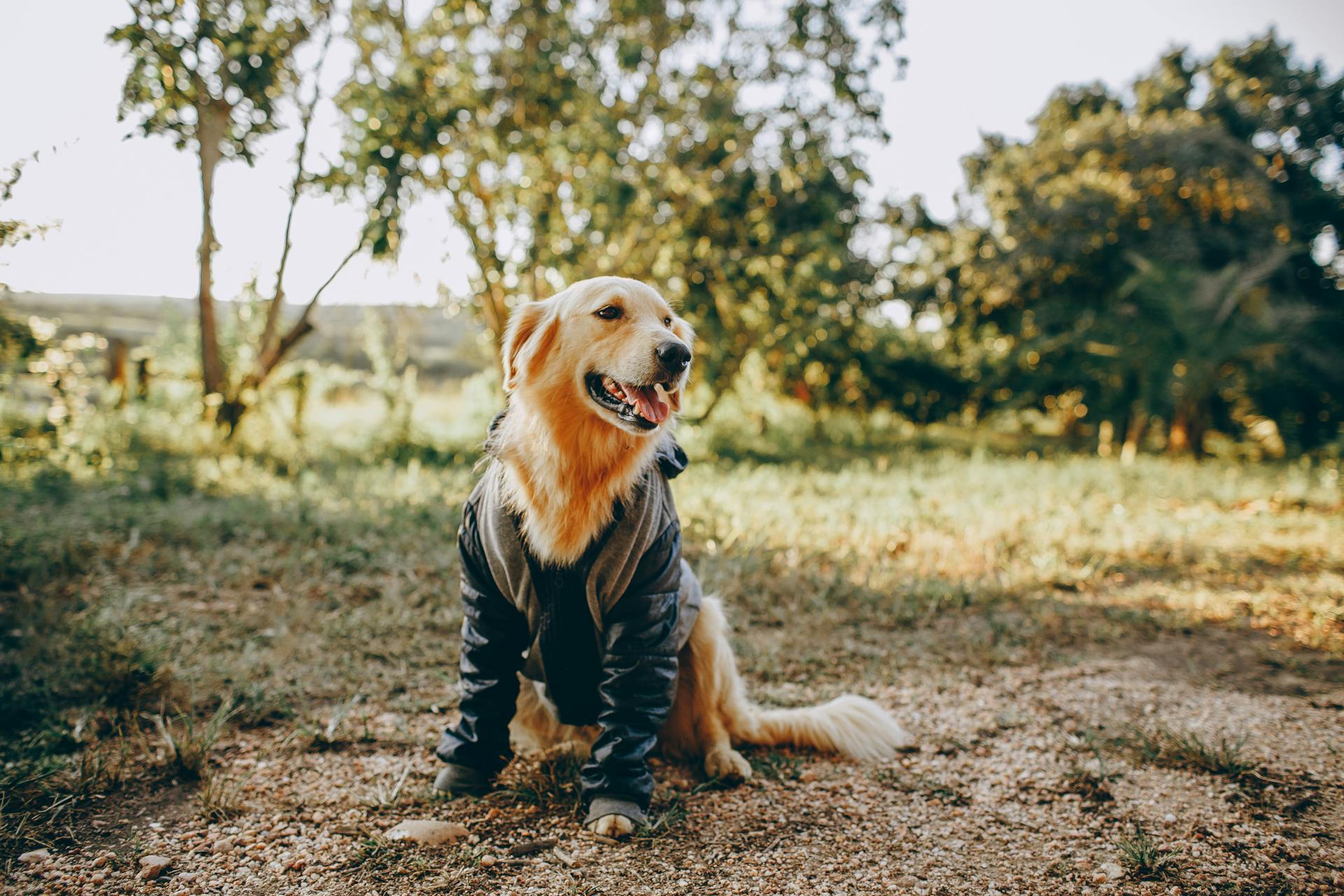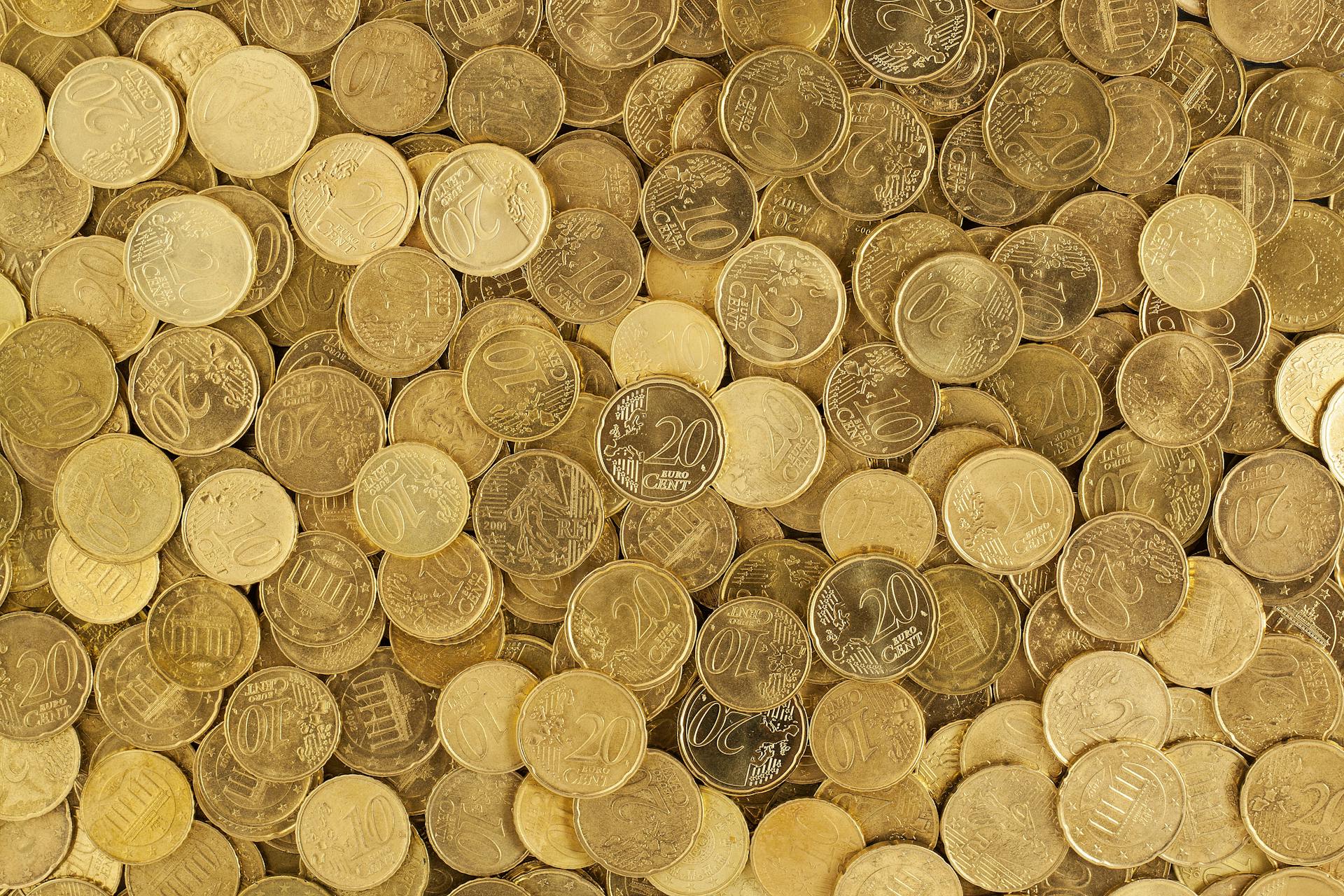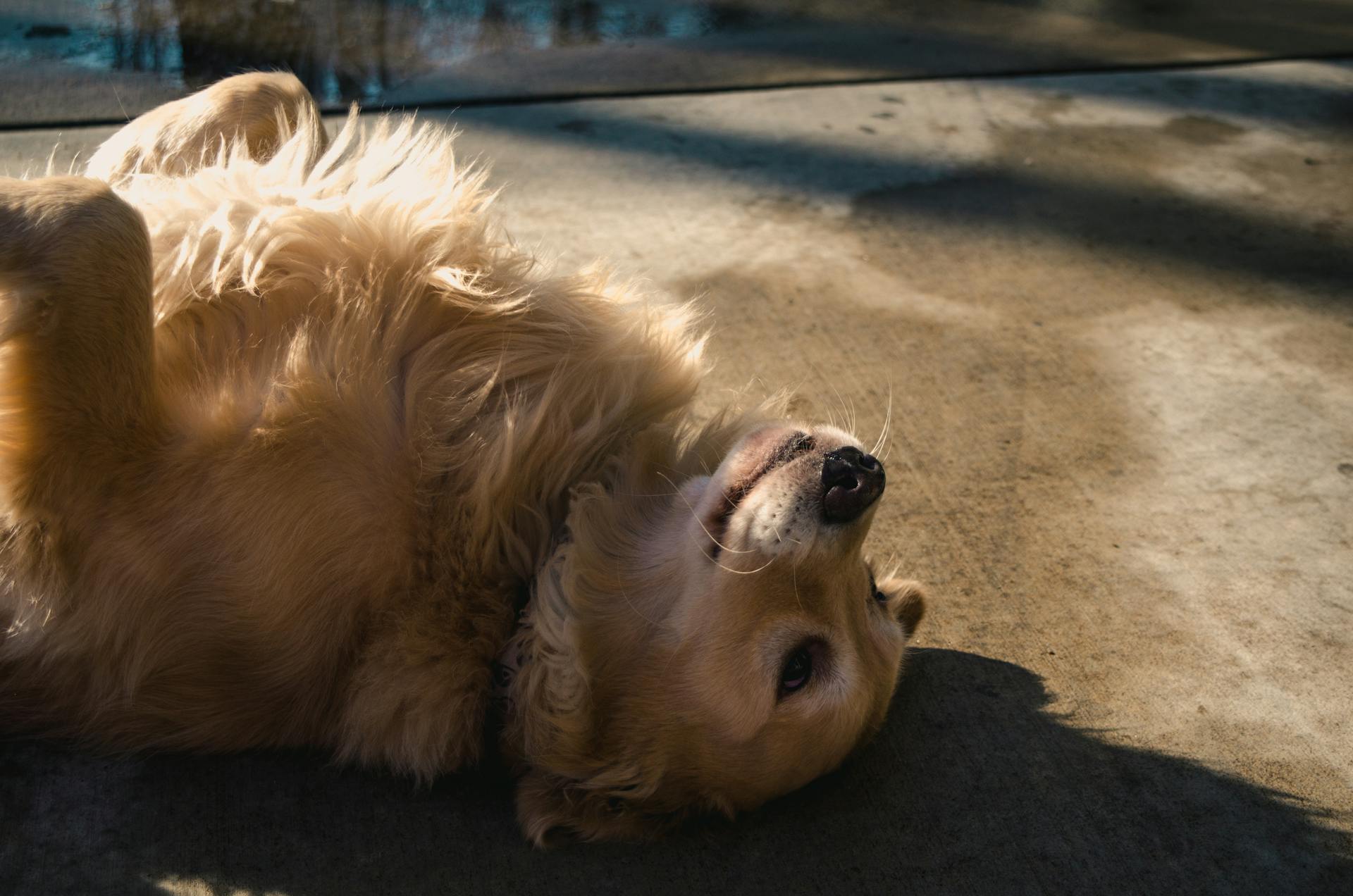
The Golden Retriever Lab Mix is a crossbreed between a Golden Retriever and a Labrador Retriever, resulting in a loyal and friendly companion.
They typically weigh between 55-80 pounds and stand between 20-24 inches tall.
Their coat can range from a short, smooth coat to a medium-length coat with a mix of the Golden Retriever's golden hue and the Labrador Retriever's black or yellow coat.
Their lifespan is around 10-12 years.
They require regular exercise to stay happy and healthy, which can include daily walks and playtime.
Their intelligence and trainability make them a popular choice as family pets and working dogs.
Their friendly and outgoing nature makes them a great addition to many families.
Physical Characteristics
The Golden Retriever Lab Mix is a large dog, typically weighing between 60-80 pounds and standing 22-24 inches tall. This size range can vary slightly depending on the dog's lineage and whether it's a male or female.
Their coats can vary in color, but often have a golden or yellow hue. They can also inherit a black or brown coat color from their Labrador Retriever parent.
A Goldador's coat is a double coat, with a short to long topcoat and a dense undercoat. They shed moderately throughout the year and require weekly brushing, but more frequently during the spring and fall when they shed more.
Their ears are medium length and floppy, and their nose is black. They have a broad chest, long muzzle, and lengthy legs. Some Goldadors may have a narrower head if they have working bred parents, while others may have a blockier build if they have show or English history behind them.
Here are some key physical characteristics of the Golden Retriever Lab Mix:
Their overall build is sturdy and well-proportioned, with a long tail that's perfect for swimming.
Personality and Temperament
Goldadors get the best of both worlds when it comes to temperament. They inherit the reliable and trustworthy nature of Golden Retrievers and the kind, outgoing personality of Labradors.
They tend to showcase the easygoing and affectionate attitude of the retriever and generally welcome everyone into their home. Goldadors are no couch potatoes and need to be kept active to keep their mind and body healthy and busy.
Don't forget, both parent breeds were used for hunting, so this is always going to be an active cross-breed. They'll enjoy activities like swimming and agility training, and they'll thrive with at least 60 minutes of structured exercise a day.
Their parents are highly intelligent, eager-to-please, and appreciate having tasks to perform, which makes them highly trainable. They might even fetch the newspaper for you each morning!
Your sociable Goldador won't like isolation and may chew out of boredom and anxiety when left alone. An enclosed backyard is a must, as is a good recall cue to prevent mischief.
Their love of new faces and instant friendships can be both a blessing and a curse. Your Goldador might inherit the Lab's excitability and love making friends wherever they go.
Living Arrangements
Goldador fans appreciate just how social they are, and these outgoing dogs love to make friends with people and animals alike. They can fit well into homes that have cats or other dogs, but socializing your goldador puppy with other animals early on will ensure peace among your pets.
They prefer large, fenced yards to run around in during the day, but are adaptable enough to handle apartment living so long as they're getting enough regular exercise.
Expand your knowledge: Golden Gate Lab Rescue Available Dogs
Living Needs
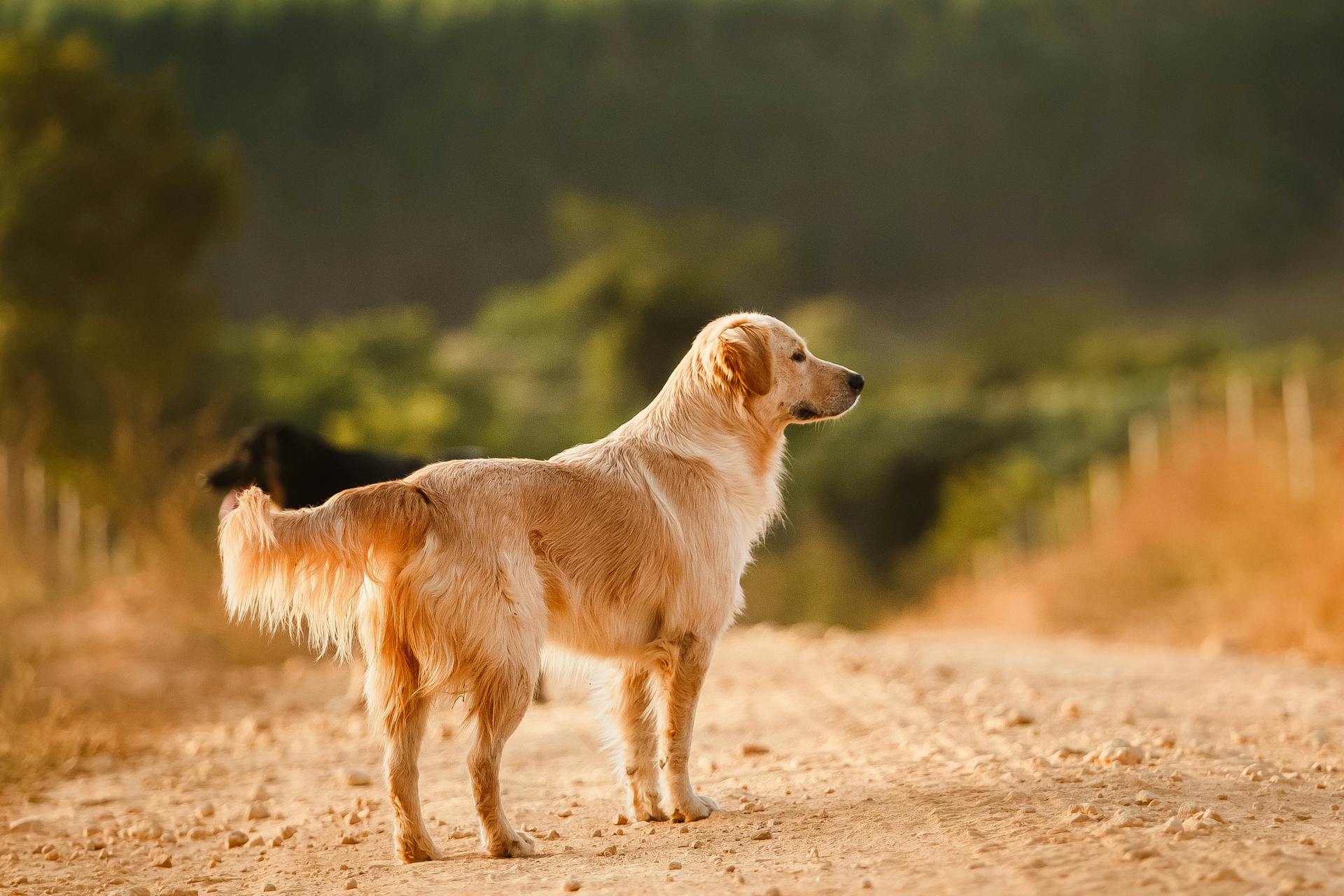
Goldadors are social dogs that thrive on interaction with people and other animals, making them a great fit for homes with multiple pets.
They're extremely loyal and see themselves as part of the family, so they shouldn't be left home alone for long periods of time.
These dogs love to be active and will happily join you on adventures like splashing around at the local lake or going on hikes.
However, it's essential to remember that goldador puppies need to be socialized with other animals early on to ensure peace among your pets.
Goldadors are adaptable and can handle apartment living as long as they get regular exercise, but they do prefer large, fenced yards to run around in during the day.
High-intensity exercise, like long jogs, should be avoided for goldador puppies until their bones are fully developed, around 18-20 months old.
Families
Living with a Goldador Lab Retriever Mix can be a wonderful experience for families. They are extremely friendly and affectionate, making them great with kids.

The Goldador is naturally gentle, but they can play tirelessly as long as your kids can keep up. This means they're perfect for families with energetic children who love to play.
Supervision is still needed around toddlers and infants due to their large size. This is a small price to pay for the joy and companionship they bring to your family.
The Goldador Lab Retriever Mix is a great addition to a loving and active family. They thrive on attention and affection, making them a great fit for families who can provide plenty of love and interaction.
Care and Maintenance
Your golden retriever lab mix needs regular grooming to prevent matting and tangling of their fur. Brush them at least twice a week to catch loose hairs.
Their pendulous ears need special attention to prevent ear infections. Clean them a few times a month, and consider taking them to a professional groomer for regular ear care.
Daily brushing is a must during their heavier shedding seasons, and daily ear cleaning will help keep them healthy and happy.
Care

As a Goldador owner, you'll want to brush your dog regularly to prevent matting and tangling of their fur, especially during shedding season when they shed a great deal.
Daily brushing is a must during heavier shedding seasons, while every few days will suffice during the rest of the year.
Their pendulous ears need to be cleaned a few times a month to prevent ear infections.
Their teeth should be brushed daily to prevent periodontal disease.
Goldadors are highly intelligent and eager to please, making them a breeze to train with positive reinforcement.
Training sessions should be short and productive, with plenty of praise and treats to keep them engaged.
With their high energy and intelligence, Goldadors make excellent working dogs, exceling as hunting companions, bomb sniffers, and service guide dogs.
Training Tips
Training your Golden Retriever Labrador Mix requires patience and consistency, especially when they're still puppies. They have a mouthing habit and may pick up anything they're not supposed to, so it's essential to break this habit early on.
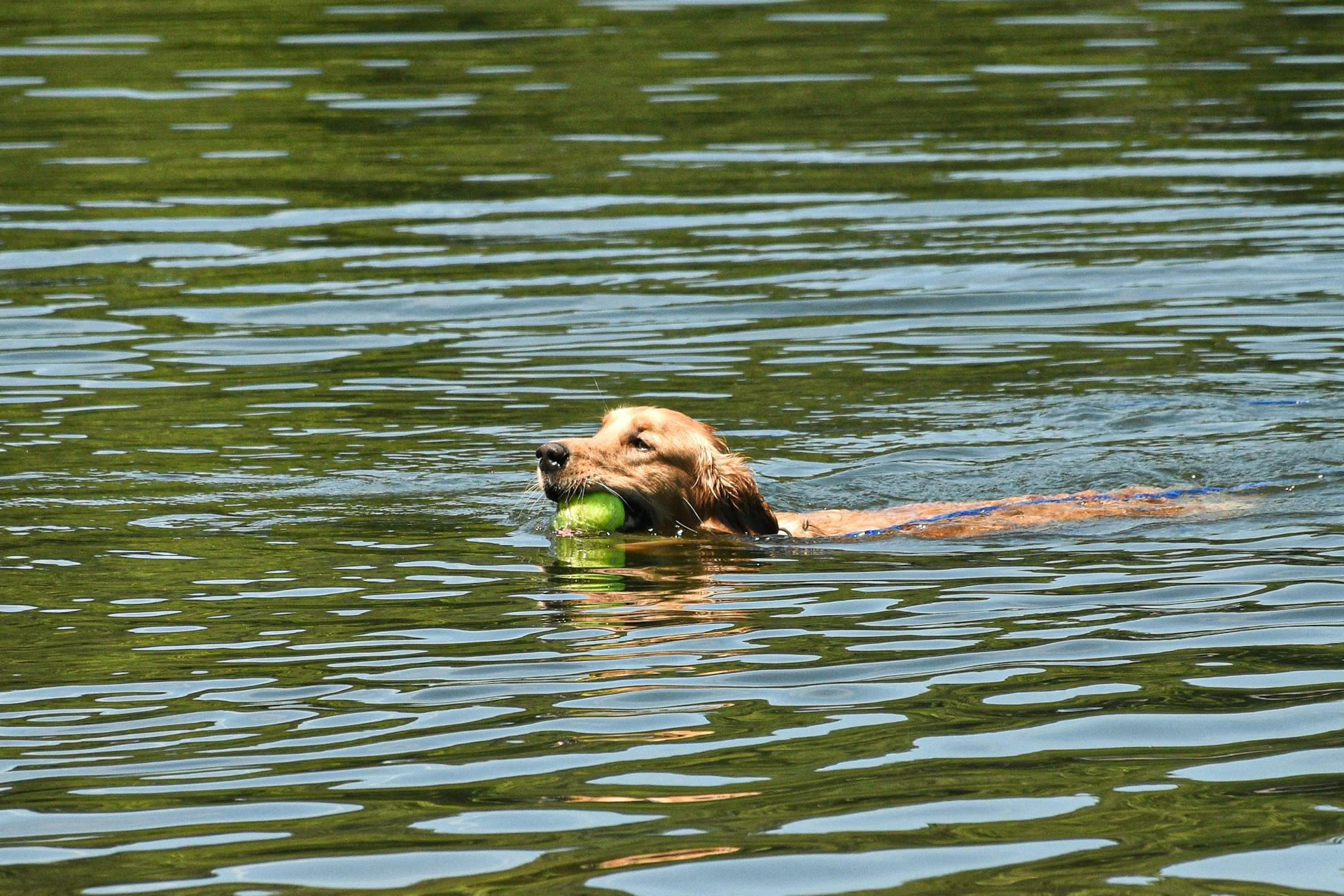
Start training your Goldador as soon as possible, ideally from the moment you bring them home. Both parent breeds were bred to carry things, so they'll naturally have a strong instinct to do so. Training them early will help prevent unwanted behaviors like putting their mouth on people or objects.
Socialization is key to raising a well-adjusted Goldador. Expose them to various environments, people, and situations to help them become confident and calm around strangers. If you don't socialize your puppy, they may grow into a socially awkward dog that gets scared and nervous easily.
Positive reinforcement is the best approach when training your Goldador. Avoid negative punishment-based training, as this can lead to your dog fearing you rather than respecting you as their leader. Reward your puppy with praise and treats when they do something right, and make it a regular routine.
Goldadors are intelligent dogs that need mental stimulation to avoid developing aggressive behaviors. Engage them in activities that challenge their minds, such as puzzle toys or scent games, to keep them happy and healthy.
Problems
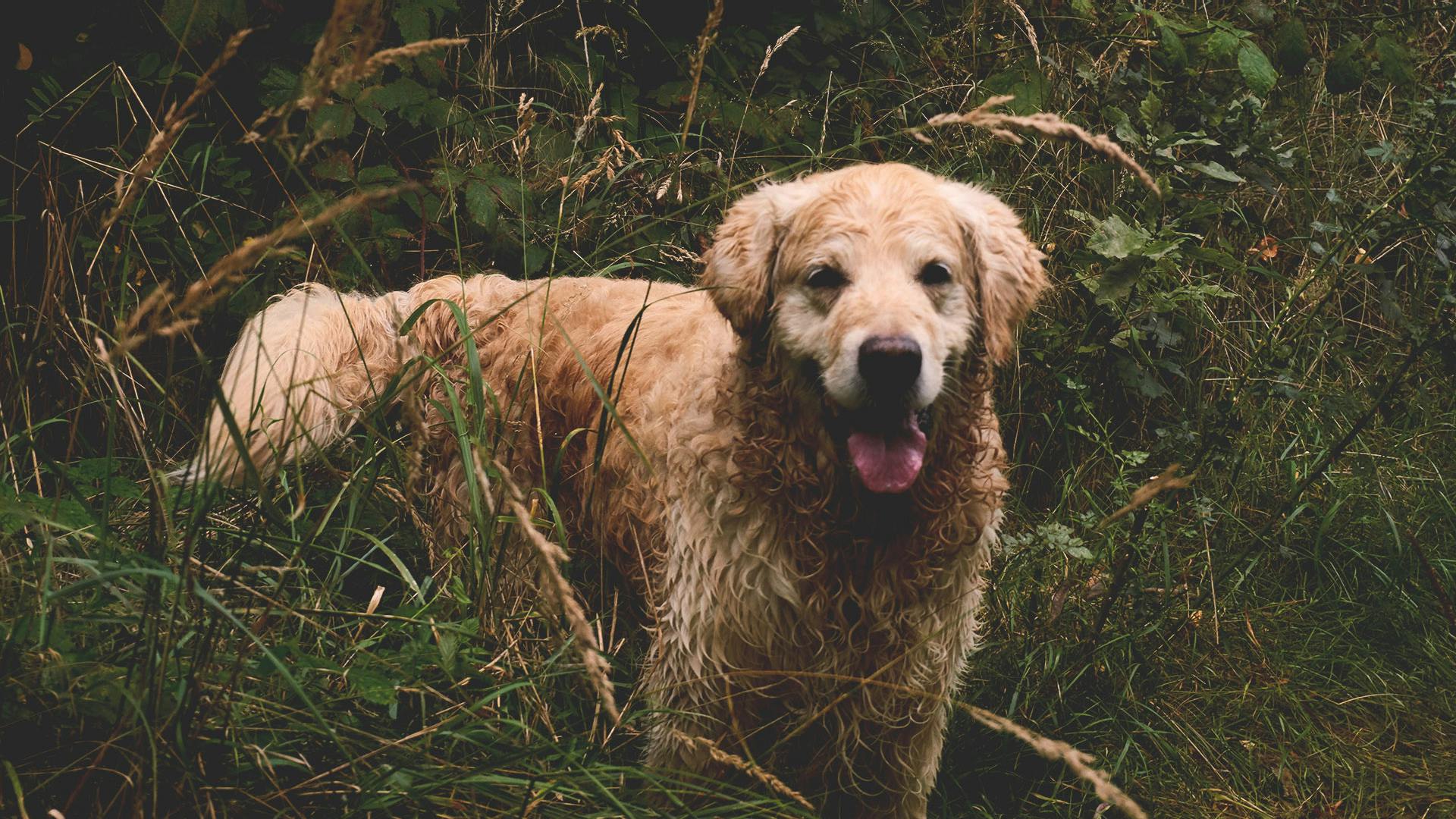
As a Goldador owner, it's essential to be aware of the potential health issues that can arise. A higher coefficient of inbreeding (COI) in purebred dogs can lead to health problems, but since Goldadors are a crossbreed, their COI is lower, making health issues less likely.
However, health issues can still occur, and it's crucial to monitor your dog's health closely. Some common health issues in Goldadors include hip dysplasia, elbow dysplasia, diabetes, and diseases of the eye.
Hip dysplasia is a heritable condition where the thighbone doesn't fit properly into the hip joint, causing pain and potentially leading to arthritis. Elbow dysplasia is another heritable disorder where the three bones of the elbow grow at different proportions and speeds.
Diabetes is a common condition in dogs, characterized by excessive thirst, weight loss, and increased urination. If left untreated, diabetes can result in various health issues in dogs. Diseases of the eye, such as Progressive Retinal Atrophy (PRA) and Cataracts, can also affect Goldadors.
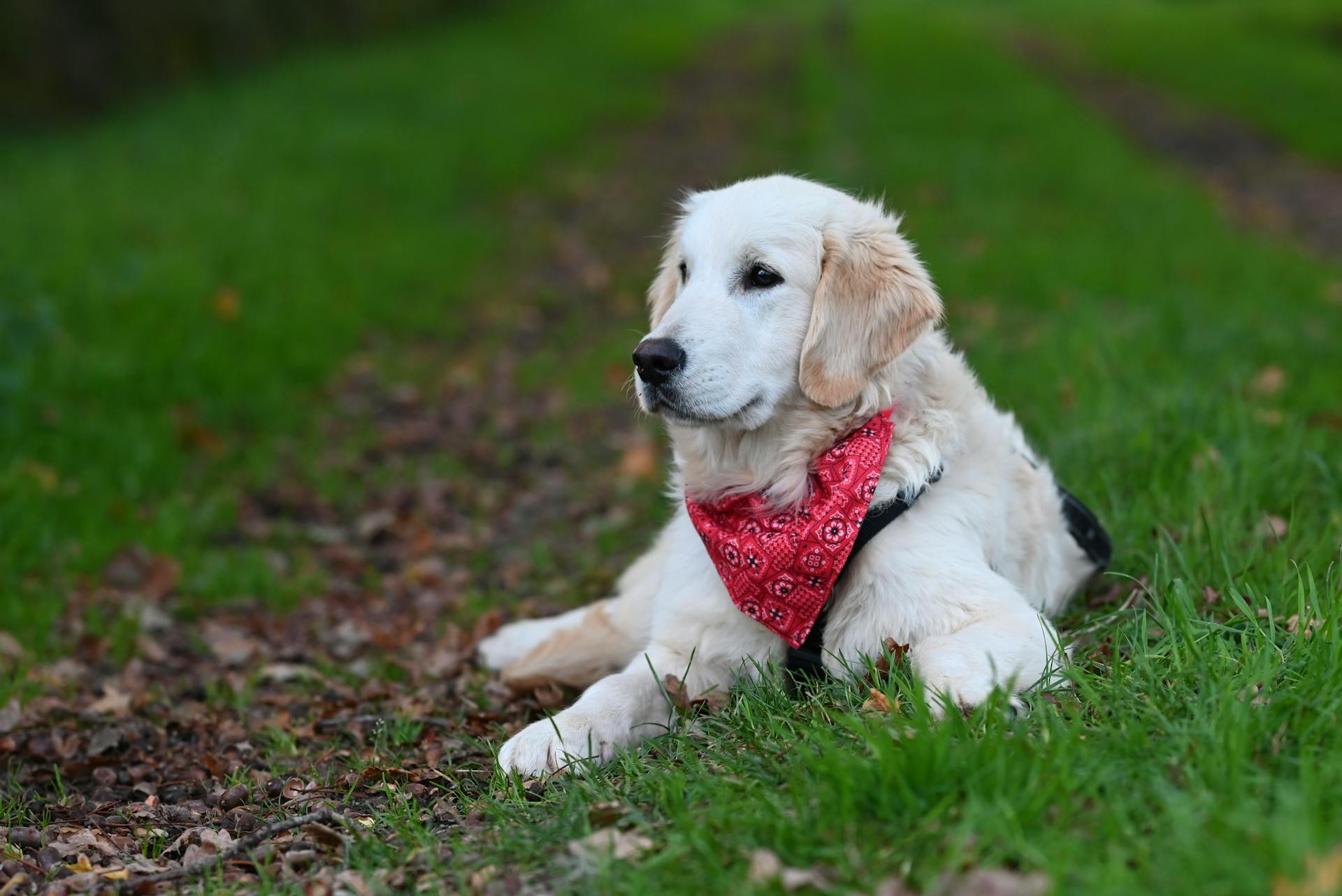
To minimize the risk of these health issues, ensure your breeder has screened for PRA, hip and elbow dysplasia, and cataracts before bringing your puppy home. A varied diet and small, frequent meals can also help decrease the risk of bloat, a condition that can't be predicted.
Here's a list of common health issues in Goldadors:
- Hip Dysplasia
- Elbow Dysplasia
- Diabetes
- Diseases of the Eye (PRA and Cataracts)
Health and Nutrition
A Golden Retriever Lab mix needs to eat between 3.5 – 4.5 cups of the best dry dog food daily, split into two equal meals.
Providing your Golden Retriever Lab mix with the nutrition they need is crucial for their overall health and well-being. A high-quality dog food that caters to their active lifestyle should be chosen.
To support their joint health and mobility, a balanced formula rich in proteins, healthy fats, and essential nutrients is essential. This can be achieved by feeding them a dog food that includes glucosamine and other joint-friendly ingredients.
Here are some essential nutrients that your Golden Retriever Lab mix needs:
- Proteins for healthy muscle development and energy
- Calcium, phosphorus, and essential vitamins for strong bones and teeth
- Glucosamine for joint health and mobility support
- Vitamins, chelated minerals, and antioxidants for immune system health
It's also important to remember that age plays a crucial role in choosing the right food for your Golden Retriever Lab mix. Whelps will have their nutritional needs met better with the best puppy food brands, while older dogs need nutrient ratios found in the best senior dry dog food.
Food Requirements
Your Golden Retriever Lab mix needs a balanced diet to stay healthy. Feeding them between 3.5 – 4.5 cups of high-quality dry dog food daily, split into two equal meals, is a good starting point.
Make sure to provide a bowl of clean water at all times to keep your Goldador hydrated. Avoid feeding them low-quality dry dog food, and instead opt for a commercially manufactured food that meets their nutritional needs.
As your dog ages, their nutritional requirements will change. Whelps need puppy food, while older dogs require senior dry dog food with nutrient ratios tailored to their age.
To ensure your dog gets the necessary vitamins and minerals, consider adding a food booster or supplement, such as Nutra Thrive dog food supplement.
Exercise Requirements
The Lab Golden Retriever Mix has an active temperament, so they need at least 2 hours of exercise daily to stay happy and healthy.
Getting bored can lead to destructive behavior, so regular physical activities are a must.
If you can't commit to 2 hours of exercise daily, hiring a dog walker might be a convenient solution.
You can also try other outdoor activities with your dog, such as hiking, swimming, dock diving, or play fetch.
Here are some fun outdoor activities to try with your Golden Retriever Lab Mix:
- Hiking: A great way to turn your daily walk into a more challenging and exciting experience for your dog.
- Swimming: A great bonding experience and a relief from the heat during summer months.
- Dock Diving: A fun sports activity where you throw a floating toy and encourage your dog to jump and swim out to retrieve it.
- Play Fetch: A classic outdoor game that's great for summer, but be careful not to overwork your dog.
Are They Hypoallergenic?
Your Goldador is not hypoallergenic. This is not an allergy-friendly dog, as they have high shedding that spreads dander from skin and saliva all around your home and clothes.
Adoption and Rescue
Local animal shelters can be a great way to adopt your new forever friend. They often have adult or senior Goldador dogs looking for a new home.
Golden Retriever and Labrador rescues sometimes have Goldadors available for adoption. These rescues may also have purebred dogs that were previously used in puppy mills or retired from the show ring.
Golden Retriever Lab mix puppies are rare to come up for adoption, but many adult or senior designer dogs end up needing a new zip code in their later years.
Worth a look: Black Lab Mix for Adoption
Considerations Before Adopting
When adopting a dog, it's essential to consider the breed's energy level, and Golden Retriever Lab Mixes, also known as Goldadors, are generally high-energy dogs.
They require regular exercise to stay happy and healthy, so make sure you have enough time and space for daily walks and playtime.
Rescuing a Dog
Rescuing a dog can be a rewarding experience, and local animal shelters are a great place to start. Golden Retriever and Labrador rescues often have Goldadors looking for homes.
Local shelters can have a wide range of dogs available for adoption, including adult and senior dogs. Many of these dogs end up needing a new home in their later years.
Golden Retriever Lab mix puppies don't often come up for adoption, but that's not to say you won't find a lovable adult Goldador at a shelter.
Return
If you're considering adopting a Golden Retriever Lab Mix, you might be wondering what to expect when it comes to rehoming a Goldador in need.
Local animal shelters can be a great way to adopt your new forever friend, and Golden Retriever and Labrador rescues often have Goldadors looking for homes.
Golden Retriever Lab Mixes are typically medium to large-sized dogs with a sturdy build, and they often have a coat that is dense, water-resistant and comes in various colors, ranging from cream to chocolate.
They are intelligent, fast learners, and very co-operative with their handlers, making them well-suited for seeing eye dog roles.
To help minimize the likelihood of hereditary health issues, it's essential to check that the breeder has followed the recommended testing for the Labrador Retriever breed, which includes tests for Hereditary Nasal Parakeratosis (HNKP), Centronuclear Myopathy (CN), Hip and Elbow Evaluation, Progressive Retinal Atrophy (PRA), Exercise Induced Collapse (EIC), and Hereditary Cataracts (HC).
Here is a list of recommended health tests for Labrador Retrievers:
- Hereditary Nasal Parakeratosis (HNKP)
- Centronuclear Myopathy (CN)
- Hip and Elbow Evaluation
- Progressive Retinal Atrophy (PRA)
- Exercise Induced Collapse (EIC)
- Hereditary Cataracts (HC)
Golden Retriever Lab Mixes may inherit health issues from both Golden Retrievers and Labrador Retrievers, including hip dysplasia, elbow dysplasia, and certain eye conditions. Regular veterinary check-ups are crucial for preventive care.
The average lifespan of Golden Retriever Lab Mixes is typically around 10 to 14 years, with proper care, nutrition, and regular veterinary attention.
On a similar theme: Golden Retriever Hemangiosarcoma
Frequently Asked Questions
What is a Golden Retriever Lab mix called?
A Golden Retriever Lab mix is commonly known as a Goldador. This crossbreed combines the friendly traits of both parent breeds.
How big will a Golden Retriever Labrador mix get?
Goldador puppies can grow up to 21-25 inches long and weigh 55-80 pounds, making them a medium to large-sized breed
What do Goldador dogs look like?
Goldador dogs typically have a sturdy build and a medium to large size, with a dense, water-resistant coat in various shades of gold, cream, or yellow. Their physical appearance is a key part of their unique charm.
Are Goberians good dogs?
Yes, Goberians are known for being loyal, playful, and affectionate companions. They make great family pets, especially for active owners who enjoy outdoor adventures.
What is the lifespan of a Golden Retriever lab mix?
The average lifespan of a Golden Retriever Lab Mix is 10 to 14 years with proper care. Understanding their lifespan and needs is essential for potential owners to make informed decisions.
Featured Images: pexels.com
